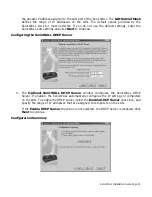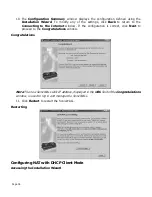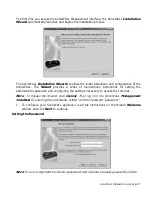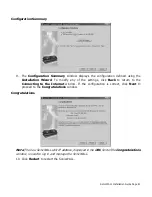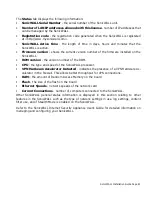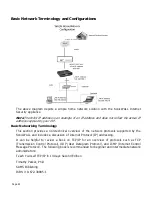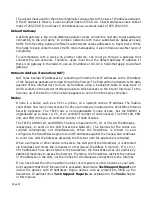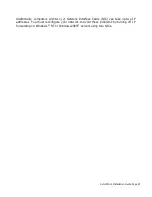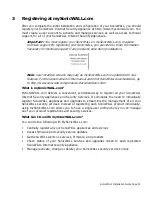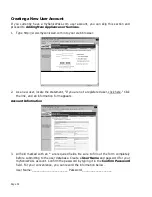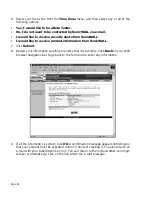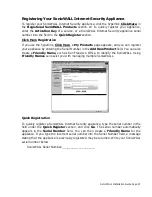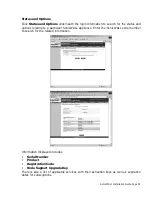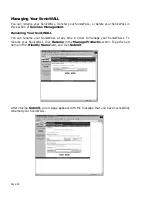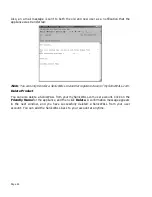
SonicWALL Installation Guide Page 47
There are three components of IP addressing:
•
IP address
•
Subnet mask
•
Default gateway
IP Address
Just as each household or business requires a unique phone number, a networked device (such
as a computer, printer, file server, or router) must have a unique IP address. Unlike phone
numbers, an IP address requires the entire number when communicating with other devices.
There are three classes of IP addresses: A, B, and C. Like a main business phone number that
one can call, and then be transferred through interchange numbers to an individual’s extension
number, the different classes of IP addresses provide for varying levels of “interchanges” or
subnetworks, and “extensions” or device numbers. The classes are based on estimated network
size:
•
Class A — used for very large networks with hundreds of subnetworks and thousands
of devices. Class A networks use IP addresses between 0.0.0.0 and 127.0.0.0.
•
Class B — used for medium to large networks with 10–100 subnetworks and hundreds
of devices. Class B networks use IP addresses between 128.0.0.0 and 191.0.0.0.
•
Class C — used for small to medium networks, usually with only a few subnetworks
and less than 250 devices. Class C networks use IP addresses between 192.0.0.0 and
223.0.0.0.
Just as one would go to the phone company for a phone number, there are controlling bodies
for IP addresses. The overall controlling body for IP addresses worldwide is InterNIC.
Businesses or individuals can request one or many IP addresses from InterNIC. It’s a good idea
to estimate the network’s future growth when requesting the class and number of IP addresses
requested.
Subnet Mask
The IP addressing system allows subnetworks or “interchanges” to be created and device
numbers or “extensions” to be established within these subnetworks. These numbers are
created using a mathematical device called a subnet mask. A subnet mask, like the IP address,
is a set of four numbers in dotted decimal notation. Subnet masks typically take three forms:
•
255.0.0.0
•
255.255.0.0
•
255.255.255.0
The number 255 “masks” out the corresponding number of the IP address, resulting in IP
address numbers that are valid for the network. For example, an IP address of 123.45.67.89
and a subnet mask of 255.255.255.0 results in a sub network number of 123.45.67.0 and a
device number of 89. The IP address numbers that are actually valid to use are those assigned
by InterNIC. Otherwise, anyone could set up IP addresses that are duplicates of those at
another company.
Summary of Contents for GX 250
Page 1: ...SONICWALL Installation Guide...
Page 51: ...Page 50...



